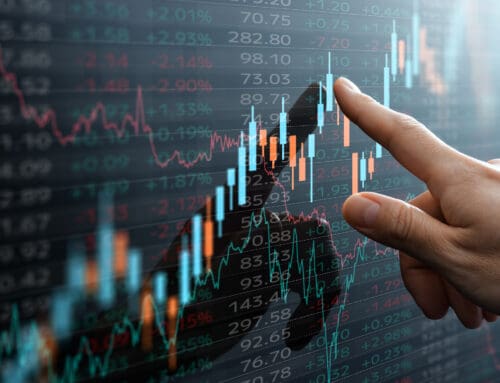Even though the stock market indexes have recovered some of their losses suffered this year, it is too early to be certain whether the shorter term bullish trend has changed to the downside, or this is just another pause that refreshes. When a bull market thunders ahead too far for too long without breaks, bad things happen.
I have opined that fundamentally, the economic factors are not a problem now. Stocks in general are not too high based upon current corporate profit levels and continuing growth of sales compared to any long term averages of these indicators. But knowing that and forking over $6 will merely get you a cup of something at high-brow coffee shops.
One thing is certain. January flunked the market test. All three indexes—the Dow 30, S&P 500, and Nasdaq 100—finished with losses exceeding 5, 3, and 1 percent for the month.
Since 1950, each and every time (24 of 24) the S&P 500 has lost ground in January, one of three things happened. We had a new or continuing bear market in stocks, the index dropped by at least 10% more, or the entire year ended with very little total gain (flat.) This is according to the great work contained in The Stock Trader’s Almanac by Jeffrey A. Hirsch and his father, Yale Hirsch. By the way, they describe as flat those years in which the index rose by 4.5 percent or less.
There was a bit of difference between those three possibilities, but a statistic of 100 percent always gets my attention. The recent 2008 was the worst for the entire year, a loss of 38.5 percent. The best result occurred in 2003 at the end of that terrible bear market, when the year finished up 26.4 percent. Not the situation now.
If a person prefers to ignore market drops of any kind, this information might be of slight interest and no consequence. However, if you practice principal protection, then you or your advisor should be on guard to judge the likely severity of a correction.
For example, last year’s stock market gave excellent returns, but contained periods of several drops of at least 3 and one drop of over 5 percent. These are perfectly normal and absolutely necessary for a healthy bull market to continue.
But whenever the S&P 500 lost more than 10 percent after February 1, the rest of the year was sour. This is why one should pay particular attention and consider selling an investment whenever it approaches 8 to 10 percent loss from its high point. The rule espoused by Investors Business Daily is 8 percent with no ifs, ands or buts!
Everyone says that they want to buy low and sell high. But in my experience, no one ever wants to sell—period. It might reverse and go higher. True, but it does not make up for the fact that it might and often does drop ever lower while you are left with only hope that it is not another period like 2008-09 or 2000-03. Hope is not a good investing strategy.
Next week let’s look at what you can do to improve your odds of success in these situations.
(Past performance is no guarantee of future results.)




